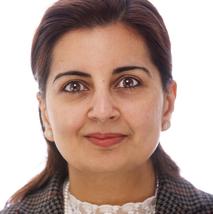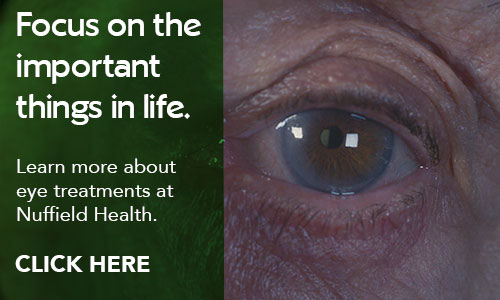3 common eye diseases which cause sight loss
- Overview
As we age, diminishing vision is one of the greatest threats to our quality of life. The three most common conditions that cause sight loss, do so and are treated in different ways:
- Blindness caused by cataracts is reversible with surgery
- Blindness caused by glaucoma is permanent but your remaining vision can be preserved
- Blindness caused by age-related macular degeneration (AMD) can be treated in some cases and may improve your vision.
1. Cataracts
Cataract, which is a clouding of the natural lens of the eye, is the biggest cause of reversible blindness worldwide, affecting 133 million people.
What are the early signs of cataract?
- Blurry vision
- Glare from car headlights
- Difficulty reading.
In fact, people who wear glasses may notice their prescription changing in a short space of time. For some, their prescription is affected so much that they can often read without spectacles, something they've not been able to do for years. This is the phenomenon of 'second sight', but it's not everlasting. Untreated, cataracts will cloud your vision until there's little left.
Click here to read: 4 signs you may have cataracts.
Treating cataracts
Of all the conditions that will make you go blind, we know the most about cataract. Early cataract surgery involved extensive wounds in the eye which often required periods of immobility. Even today, some patients imagine that cataract surgery involves removing the eye from its socket and placing it on the cheek. The truth is far less gruesome than that. We now combine micro-incision surgery with foldable lenses and phacoemulsification so you don't have to wait to go effectively blind before we can treat you, and we can achieve fantastic results.
Click here to read: A world obscured: An honest look at cataract surgery.
2. Glaucoma
Sometimes referred to as 'the silent thief of sight', glaucoma often develops with no pain and no symptoms until it is very advanced. Once glaucoma has affected vision, there's no going back. Glaucoma often runs in families so it's particularly important to have regular eye health checks if you have a family history.
All types of glaucoma affect the optic nerve which conveys signals from the eye to the brain. The nerve is made up of over 1.2 million nerve fibres. With glaucoma, bundles of these nerves start to die and gradually cause loss of your peripheral, navigating vision.
Treating glaucoma
We're not sure exactly what causes glaucoma, but we do know that we can slow down the disease by lowering the eye pressure. This can be achieved using eye drops, laser treatment, surgery or a combination of these methods.
When caught early, glaucoma can be treated and controlled. The best we can hope for is to preserve the sight you have left but sometimes the disease is aggressive and all we can do is slow it down.
3. Age-Related Macular Degeneration
Age-related macular degeneration (AMD) is the most common reason behind blind registration in the UK. In AMD there is death of light-sensitive receptors in the retina.
What are the early signs of AMD?
- Distortion
- Blurred vision
- Affects central vision, blocking out the things you're trying to focus on but doesn't affect peripheral vision so you won't go completely blind.
Click here to Test yourself for macular degeneration.
AMD risk factors
The chance of you having AMD is greatly increased by:
- Age
- Smoking
- Family history (30x more likely to have AMD if it has affected one of your parents).
Treating wet and dry AMD
Dry AMD is caused by a build-up of breakdown products from dying cells in the retina. There's nothing that can be done to treat it, but it progresses very slowly. Wet AMD, where bleeding occurs on the retina, progresses rapidly. Its development can be slowed, but not stopped, by injecting drugs into the eye every 4-6 weeks. If caught early, this may preserve your sight enough to continue activities like driving.
For information on small changes you can make to your daily routine to keep your eyes healthy read our "Keeping your eyes healthy" article.
Last updated Thursday 19 November 2020
First published on Wednesday 21 June 2017


